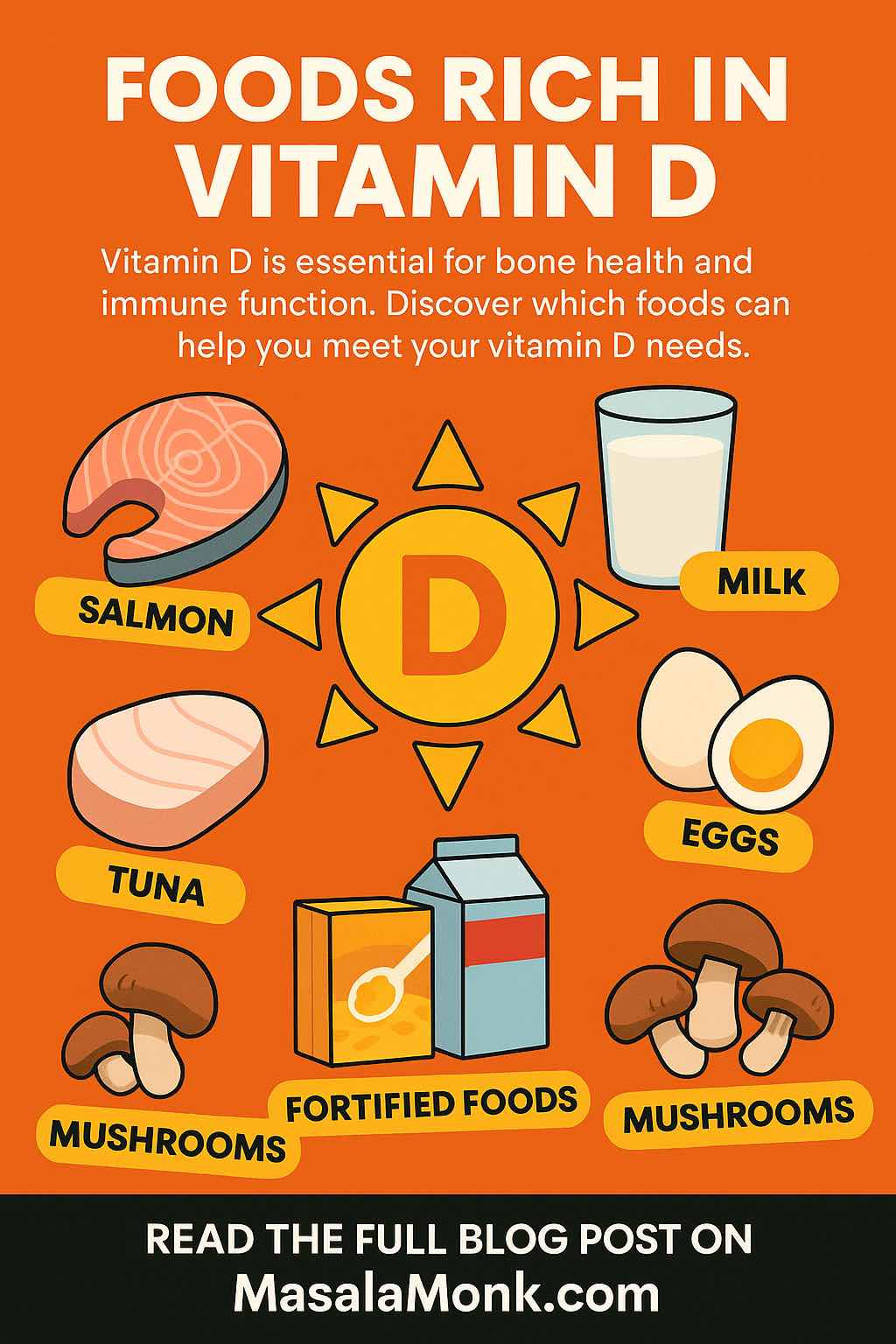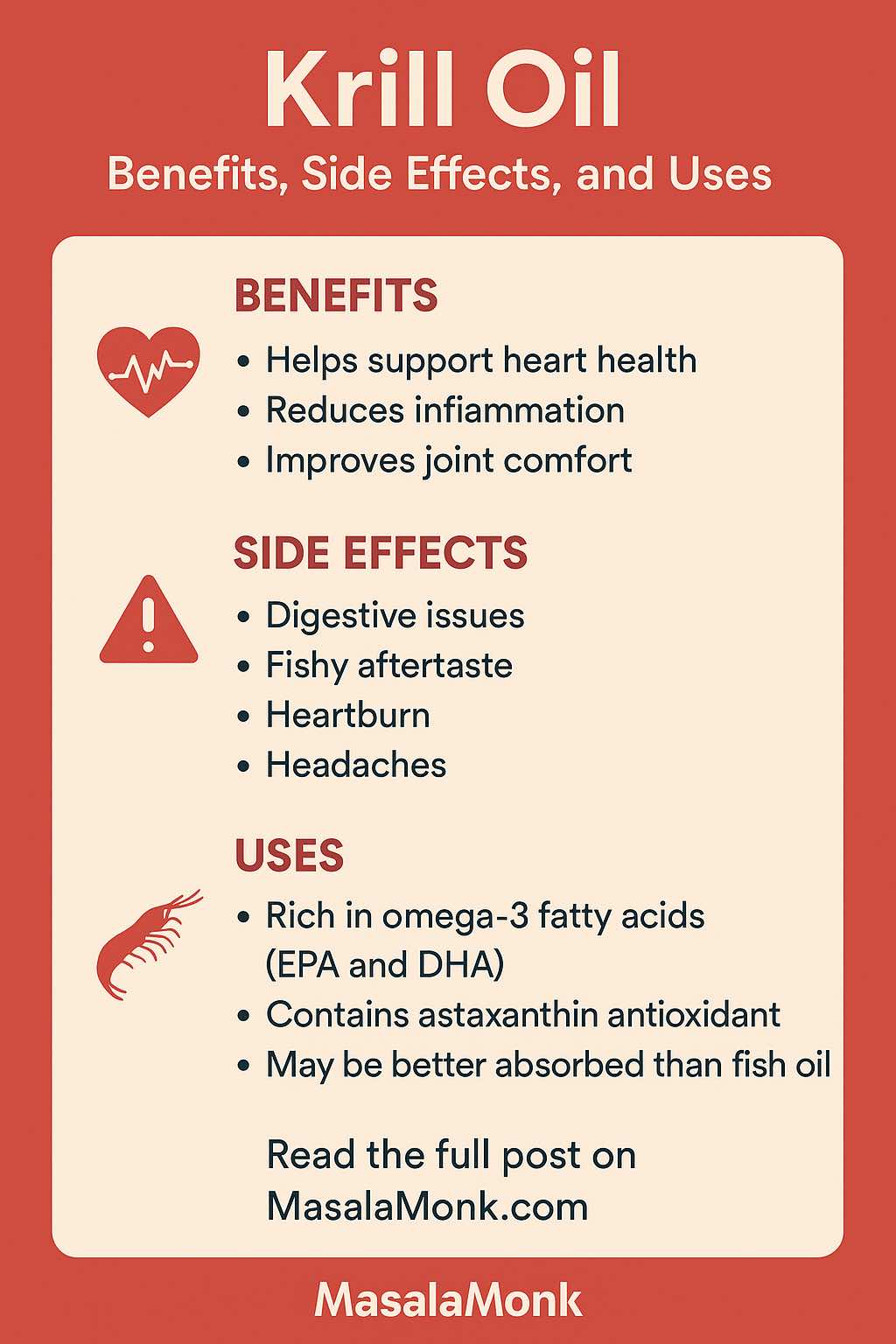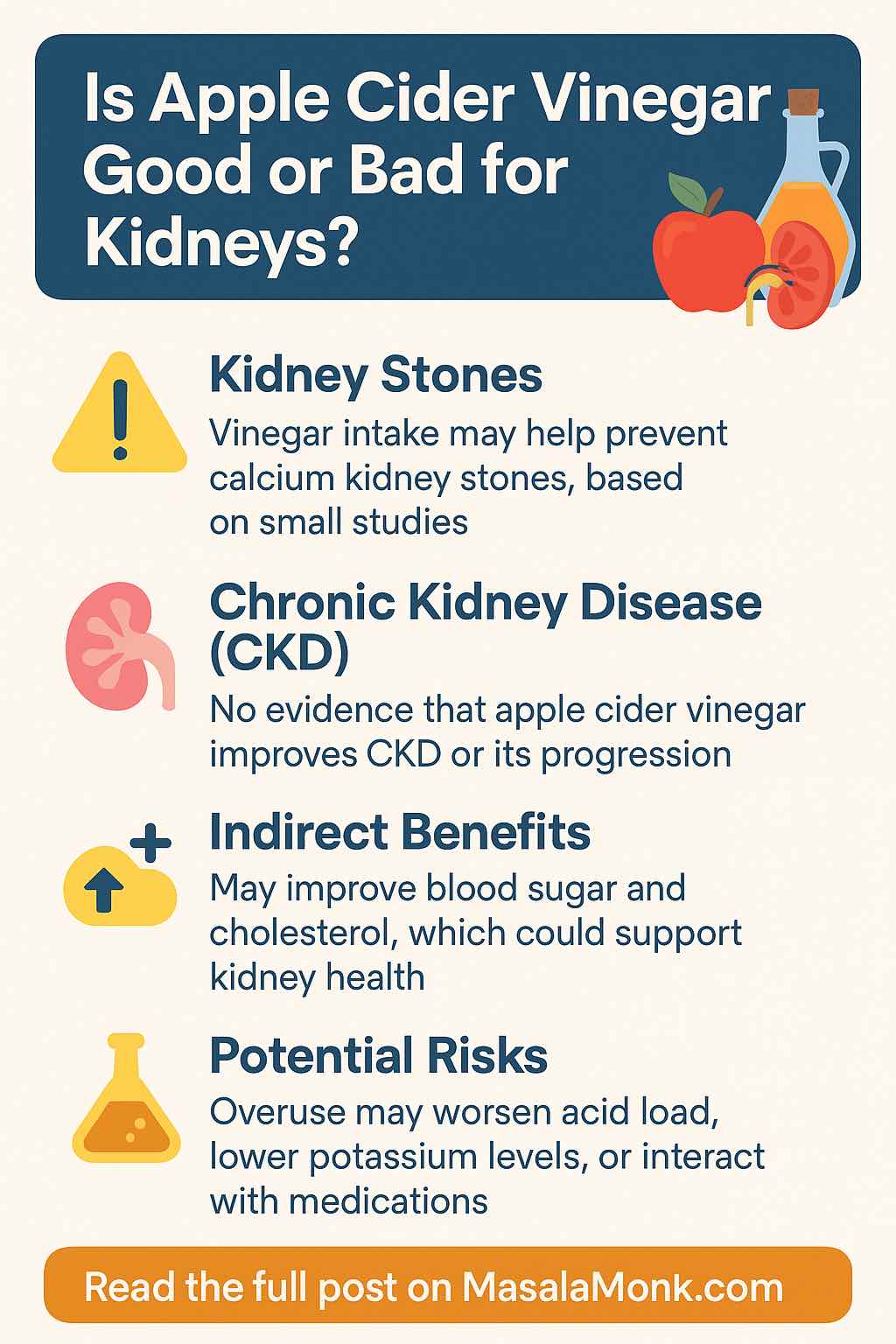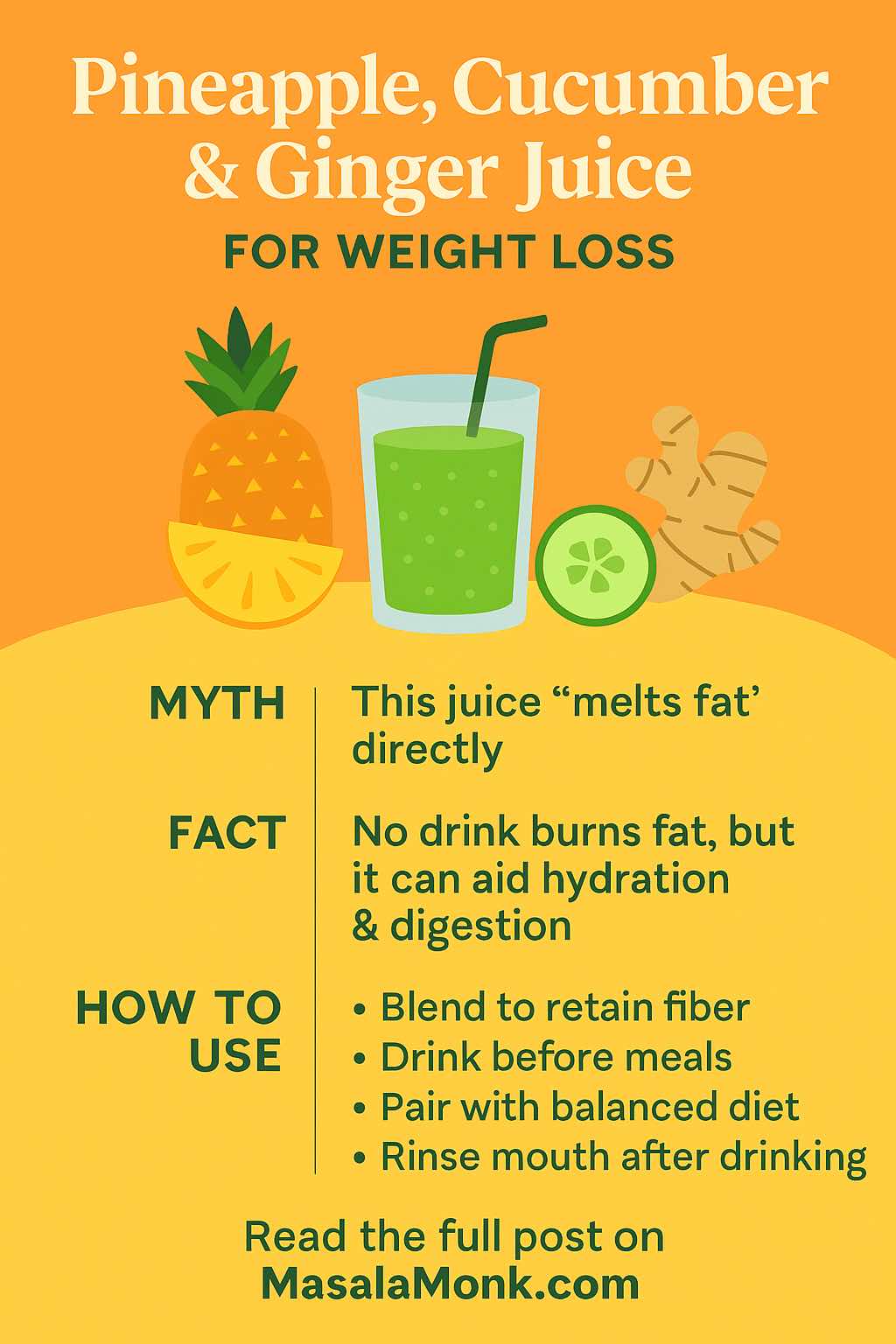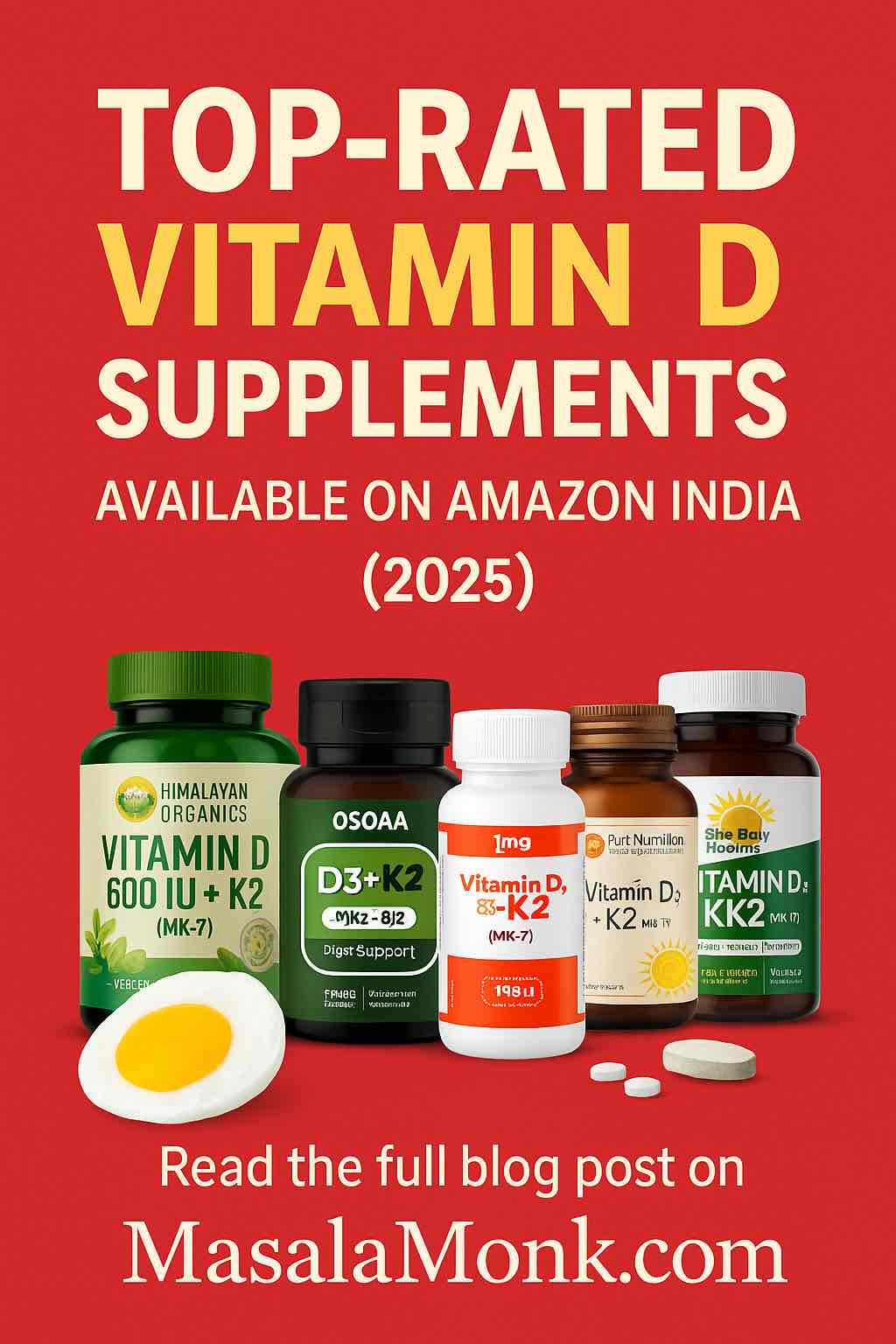
Vitamin D is more than just the “sunshine vitamin”. It plays a role in bone strength, immunity, muscle performance, heart health, and even mood regulation.
But in India, vitamin D deficiency is incredibly common due to:
- Long indoor working hours
- Air pollution reducing UVB penetration
- Sunscreen use blocking synthesis
- Limited intake of vitamin D-rich foods
That’s why high-quality Vitamin D supplements are such a game-changer — but the market is crowded with confusing options.
Also Read: Food for Vitamin D
How to Choose the Right Vitamin D Supplement in India
Before clicking “Add to Cart,” it’s worth understanding the technical factors that separate an average supplement from an effective one.
1. Vitamin D Form — D₂ vs D₃
- Vitamin D₂ (ergocalciferol): Usually plant-based, but less effective at raising blood vitamin D levels.
- Vitamin D₃ (cholecalciferol): The preferred, more bioavailable form — can be sourced from animals (lanolin) or plants (lichen).
- For vegetarians/vegans, look for “plant-based D₃ from lichen” in the label.
💡 All products in our list above use D₃, making them more effective than many generic brands.
2. IU Strength (Potency)
- IU = International Units, a measure of vitamin D content.
- 400–800 IU: Maintenance dose for healthy adults with normal levels.
- 1,000–2,000 IU: For mild deficiency or higher needs (less sun exposure, older age, darker skin).
- 5,000 IU+: Often for severe deficiency, usually under doctor supervision.
💡 The products here mostly offer 600 IU per serving — safe for daily use without risk of toxicity.
3. The Role of Vitamin K₂
- Vitamin D helps absorb calcium, but without K₂, that calcium can end up in arteries instead of bones.
- K₂ MK-7 is the most bioactive form and works longer in the body.
💡 Every supplement in our list includes K₂ MK-7 — a big plus over plain vitamin D products.
4. Absorption Factors
- Vitamin D is fat-soluble, meaning it needs dietary fat to be absorbed.
- Supplements in softgel form often contain an oil base (like coconut or olive oil), which boosts absorption.
- If in tablet form, take it with a meal that includes healthy fat.
💡 Some supplements (like OSOAA) pair D₃ with B₁₂ and other nutrients for better metabolic synergy.
5. Dietary & Lifestyle Fit
- Vegetarian/Vegan: Choose plant-based D₃ from lichen.
- Lactose-intolerant or gluten-sensitive: Look for allergen-free claims.
- Minimalists: Choose a pure D₃ + K₂ formula.
- Multitaskers: Choose a D₃ combo with other nutrients (like OSOAA’s B₁₂).
6. Brand Transparency & Testing
- Look for brands that:
- List the exact form of D₃ and K₂ used.
- Mention 3rd-party testing for purity and potency.
- Have consistent positive customer feedback over years.
7. Value for Money
- Compare cost per IU and tablets per pack rather than just MRP.
- Bulk packs (like 120 tablets) are usually more economical for long-term use.
Also Read: Vitamin D and Weight Loss
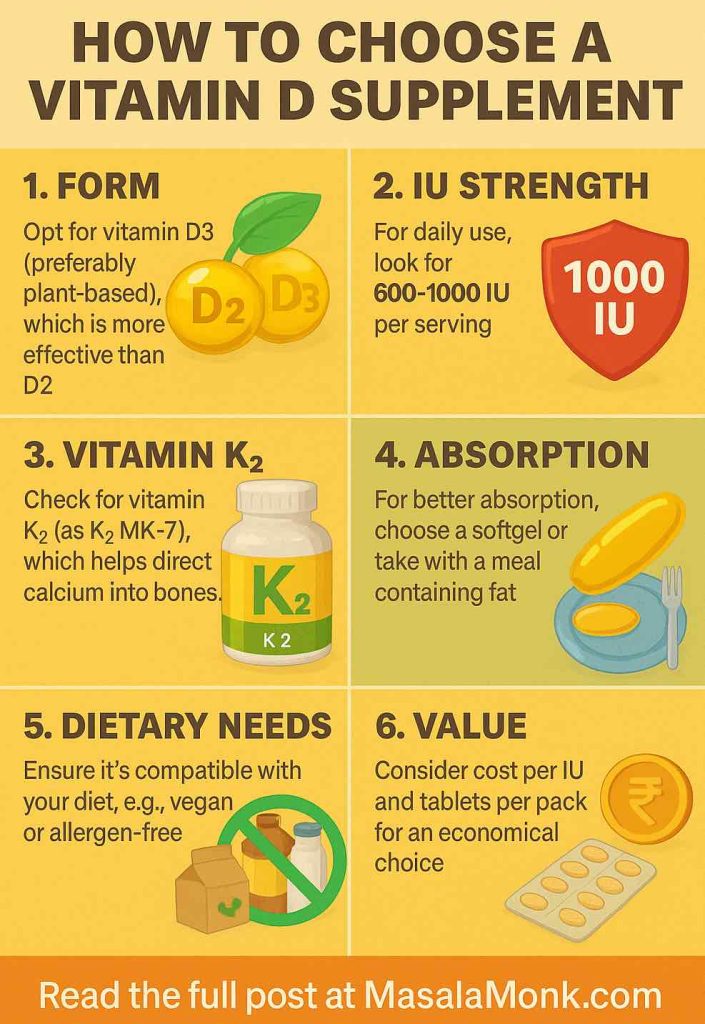
After analyzing Amazon India’s bestsellers, reading hundreds of verified customer reviews, and comparing formulations, we’ve narrowed it down to the 5 best Vitamin D supplements for 2025 — and exactly who each one is best for.
1. Vlado’s Himalayan Organics Vitamin D₃ 600 IU + K₂ (MK-7)
Why It Stands Out:
- Balanced daily dose (600 IU) of plant-based D₃ paired with K₂ MK-7 for optimal calcium utilization.
- Vegetarian-friendly, gentle on digestion.
- Trusted Himalayan Organics brand, known for consistent quality.
Who Should Choose This:
✅ Everyday wellness seekers — If you’re looking for a safe, moderate daily dose to maintain healthy vitamin D levels without risk of overdosing.
✅ Bone & heart health focus — K₂ helps prevent calcium from depositing in arteries while directing it to bones.
✅ Vegetarians — Plant-based D₃ from lichen.
User Voices:
“This plant-based D3 + K2 is a game-changer! More energy & faster recovery.”
Pros: Balanced dosage, vegetarian, reputable brand.
Cons: Not ideal for those needing rapid correction of severe deficiency.
2. OSOAA Vitamin D₃ + K₂ MK-7 + B₁₂ (120 tablets)
Why It Stands Out:
- Unique triple-nutrient combo: D₃, K₂, and Vitamin B₁₂ (often low in vegetarians).
- 120-tablet pack = 4 months supply.
- Vegan-friendly with plant-based D₃.
Who Should Choose This:
✅ Vegetarians & vegans — Covers both vitamin D and B₁₂, two nutrients often lacking in plant-based diets.
✅ Energy & mood support — B₁₂ helps with nerve function and energy metabolism.
✅ Budget-conscious supplementers — 3-in-1 formula saves buying separate products.
User Voices:
“Plant-based formula… boosts my energy. Great value for money!”
Pros: Multi-benefit formula, vegan-friendly, cost-effective.
Cons: Newer brand compared to Tata or Vlado’s, so less brand familiarity.
3. Tata 1mg Vitamin D₃ + K₂ (MK-7)
Why It Stands Out:
- Backed by Tata’s healthcare division — strong trust factor.
- Balanced 600 IU D₃ + K₂ blend for bone and heart support.
- Lichen-derived vegetarian D₃.
Who Should Choose This:
✅ First-time supplement users — Trusted Indian brand, moderate dosage.
✅ People who prefer local brands — Easy to find and recognized nationwide.
✅ Bone health maintenance — Ideal for those looking to maintain healthy levels, not aggressively raise them.
User Voices:
“Drastic change in energy levels and sleep… stress and anxiety reduced.”
Pros: Affordable, widely trusted brand, clean label.
Cons: A rare user experienced allergic reaction (possible ingredient sensitivity).
4. Pure Nutrition Natural Treasures Vitamin D₃ + K₂ (MK-7)
Why It Stands Out:
- Potent D₃ + K₂ pairing for optimal bone density and cardiovascular support.
- Well-reviewed for improving joint and muscle pain.
Who Should Choose This:
✅ People with mild joint pain — Many reviewers report reduced aches.
✅ Those okay with smaller pack sizes — Good for short-term supplementation or trying before committing.
User Voices:
“Helped improve my bone pain within weeks… simple and effective.”
Pros: Strong formula, trusted reviews.
Cons: Fewer tablets per pack = less value for long-term users.
5. The Body Reserve Vitamin D₃ + K₂ (MK-7), 120 veg tablets
Why It Stands Out:
- 100% plant-based, budget-friendly long-term option.
- Full RDA coverage per tablet.
Who Should Choose This:
✅ Long-term supplementers — Lowest cost per tablet for consistent use.
✅ Vegans — 100% plant-derived.
✅ Budget-minded buyers — No-frills, cost-effective formula.
User Voices:
“Great value for money… will keep buying.”
Pros: Best price per serving, vegan, solid formulation.
Cons: Less brand recognition than Tata or Vlado’s.
Comparison at a Glance
| Product | Best For | Key Advantage | Rating |
|---|---|---|---|
| Vlado’s Himalayan Organics | Everyday health, vegetarians | Balanced D₃ + K₂ from plants | ★ 4.8 |
| OSOAA D₃ + K₂ + B₁₂ | Vegetarians/vegans | Triple nutrient combo | ★ 4.7 |
| Tata 1mg D₃ + K₂ | New users, brand trust | Affordable, Indian brand | ★ 4.6 |
| Pure Nutrition | Joint pain relief | Potent, effective | ★ 4.4 |
| The Body Reserve | Long-term use, budget | Lowest cost per tablet | ★ 4.5 |
Also Read: Vitamin D and Pregnancy
Final Takeaway
Choosing the right vitamin D supplement isn’t just about IU numbers — it’s about your diet, health goals, and budget:
- Want trusted quality and daily wellness? → Vlado’s Himalayan Organics
- Need all-in-one vegetarian support? → OSOAA D₃ + K₂ + B₁₂
- Prefer a familiar Indian brand? → Tata 1mg D₃ + K₂
- Looking for short-term relief from aches? → Pure Nutrition
- Want long-term value? → The Body Reserve
⚠ Note: Always get your vitamin D levels tested before starting supplements. For severe deficiency, your doctor might recommend a higher IU dose or prescription formula.
Disclosure: This post contains Affiliate links, we might make a small commision if you buy through them, without impacting the cost or price you pay for the same.
Frequently Asked Questions about Vitamin D Supplements in India
1. Why do I need a Vitamin D supplement if I get sunlight?
Even in sunny countries like India, factors like pollution, indoor work, sunscreen use, and skin tone can reduce vitamin D synthesis. Supplements help maintain optimal levels year-round.
2. What’s the difference between Vitamin D₂ and D₃?
Vitamin D₃ (cholecalciferol) is more effective at raising and maintaining blood vitamin D levels. All the top products we listed use D₃, some from plant sources like lichen for vegetarians and vegans.
3. How much Vitamin D should I take daily?
For general maintenance, 600–800 IU daily is recommended. If you have a deficiency, your doctor may prescribe higher doses for a short period. Our list mostly features safe daily doses around 600 IU.
4. Why is Vitamin K₂ included in these supplements?
K₂ helps direct calcium to bones and teeth while preventing it from depositing in arteries. It works in synergy with Vitamin D₃ for better bone and heart health.
5. Are these supplements vegetarian or vegan?
Yes — all the products in our list are vegetarian, and many (like OSOAA and The Body Reserve) are vegan with plant-based D₃ from lichen.
6. Can I take Vitamin D supplements on an empty stomach?
Vitamin D is fat-soluble, so it’s best absorbed with a meal containing healthy fats. If taking on an empty stomach, choose a softgel in oil base for better absorption.
7. How long will it take to see results?
It varies — some people notice energy and mood improvements within weeks, but bone density and immunity benefits take longer. Always recheck your blood levels after 8–12 weeks.
8. Can I take Vitamin D supplements with other vitamins or medicines?
Generally yes, but certain medications (like steroids or weight-loss drugs) can affect absorption. Always consult your doctor before starting if you’re on long-term medication.
9. What’s the risk of taking too much Vitamin D?
Excess vitamin D can cause high calcium levels, leading to kidney damage. Stick to the recommended dose unless under medical supervision.
10. Which product from your list is best for me?
- For everyday wellness: Vlado’s Himalayan Organics
- For vegetarians/vegans needing B₁₂: OSOAA D₃ + K₂ + B₁₂
- For trusted local brand lovers: Tata 1mg D₃ + K₂
- For joint relief: Pure Nutrition
- For long-term value: The Body Reserve

